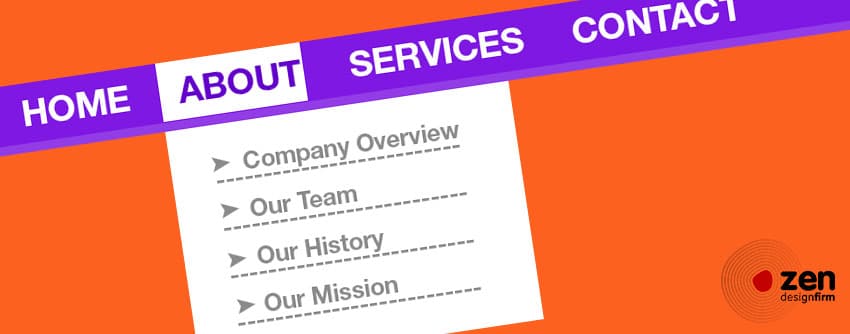The Web Design Checklist: Creating the Navigation
What goes into great design? What is at its center? A website having a pretty face is not enough, because prettiness alone will not impact a buying decision from beginning to end. Nor will having the latest, most modern, up-to-date tools and features be enough.
It can be argued that great design, at its center, is a collection of separate-but-connected ideas, principles, and practices that work together to forge a cohesive, satisfying experience for the user. If you give two great designers the same project, with the same deadline, you might get two totally different end results. But even though the look and the feel of two websites could be polar opposites, you can expect a few things from each website:
The website will look great. The two websites might not look completely alike, but they will be aesthetically pleasing.
They will have the most modern practices in mind. For example, they will make sure that the website is responsive, so that it works on all devices and platforms.
It will be totally functional. From the inception, it will be built from the perspective of the end user. The website will be optimized for user experience.
If you have a website, and you are not sure that it is performing as it should, you need to go down the checklist.
This is the second post in the Checklist series. Today’s post talks about navigation—why you shouldn’t overlook it, and some tips for you to keep in mind.
The importance of good navigation
If you look at web design through the lens of usability, then the navigation of your site is of extreme importance. Smooth, streamlined navigation facilitates the process of your visitors finding what they may want or need, while also ensuring that they stay on your site for a longer period of time. You should think of your site’s navigation as a smoothly-paved and well-lit road, with signs (your main navigation links) that guide your visitors where you want them to go. The navigation is “The Road” that your customer will travel.
Whether you hire someone to design your site, or if you design it yourself, you need to maintain that metaphor. The Road’s purpose is to simply get your visitors from point A to point B, with little-to-no obstacles. The Road should be smooth, not bumpy.
Be clear, consistent.
Your navigation should be very simple and very consistent.
Your links should be organized in order of importance. Meaning, the links on your navigation take precedence over any other links that may be on your website. If you find yourself putting too many links on the navigation bar, then you need to add dropdown menus. Another alternative is utilizing any sidebar and/or footer space that you may have on your website.
One of the reasons why we recommend wireframes is that you will have the ability to properly map out your site, see where things will go, and figure out how the various elements will function together. You need to plan the navigation before your website goes live, or you’ll run the risk of having misplaced and forgotten links on your site.
The navigation should be identical on every page of your site. Meaning, your links should be in the same place, in the same order. If not, you’ll confuse your visitors.
You should use clear, short words for your links. Your links cannot occupy too much space, so short words must be used. And ensure that those words are relevant to your webpages—using obscure language or phrases will work against you. The language you employ with your links should always be clear and concise.
Make sure the navigation works across all platforms
Your navigation should be able to work across all platforms. We have recommended responsive design in the past, and consistent navigation is one of the reasons.
If you use responsive design, make sure that the typeface can be read across all platforms, as some fonts will not be able to scale or render identically on multiple devices. In some cases, using multiple font families can slow the loading time for your site.
Responsive design will save you the headache of having to design a new navigation scheme for your separate mobile site.
The simplicity of your navigation
The navigation, though basic, is an extremely important element that cannot be overlooked. Some of the most common navigation mistakes you’ll see will include…
- Having too much clutter (way too many links)
- Inconsistent navigation
- Unnecessarily long words that are used for the links
- Words that are not relevant to the corresponding page that it links to.
- An overused navigation bar, while the footer and sidebar space sits underused.
When someone visits your site, you are metaphorically taking them on a ride that will hopefully end with them taking an action that you want them to—whether that’s purchasing your product, contacting you, or whatever.
“The Road” (the navigation) guides them along a smooth, easy ride to that action. Don’t overlook it.

















